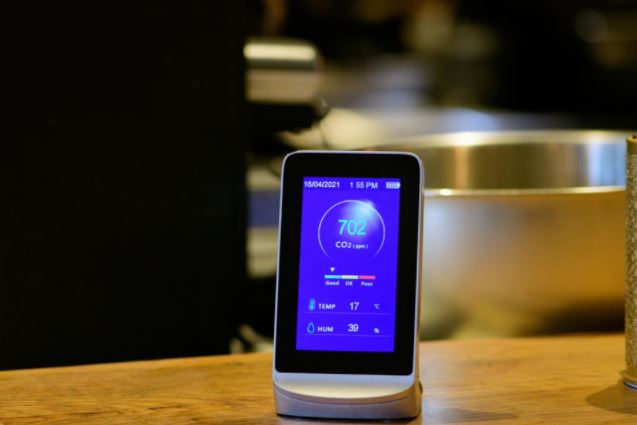After two years of crisis management in Belgium, the Federal Government has finally agreed on a "ventilation plan" for all places open to the public, such as bars, restaurants, cinemas, theatres and gyms, announced Federal Health Minister Frank Vandenbroucke.
The Government wants to carry one of the main lessons of the pandemic – the importance of healthy indoor air – into the future, not only in the fight against Covid-19, but also to avoid other respiratory diseases such as the flu.
"I am very happy that the Government has found an agreement for a legal framework that will require all publicly accessible places to continue to monitor their air quality," Vandenbroucke told De Morgen. "They must all have a CO2 meter."
That CO2 meter will have to be clearly visible to the public and may not be placed in the immediate vicinity of a door or window, Vandenbroucke announced in a press release on Monday.
Related News
- 'Unused potential': Brussels embraces rooftop culture
- Coronavirus barometer will not disappear immediately, says Vandenbroucke
- Belgium 'should have stayed in code orange a bit longer,' says Vlieghe
On average, people spend 85% of the day indoors – making healthy indoor air of great importance for the general health of the population. This is especially true for the most vulnerable groups such as babies and children, the elderly and people suffering from certain conditions.
Working, learning and living in poorly ventilated indoor spaces reduces people's well-being, concentration and productivity.
Every manager of a public place will also be asked to carry out a risk analysis, listing all factors that influence air quality, such as an inventory of the ventilation and air purification systems present, as well as the number of CO2 measurements taken over time.
Better ventilation from this spring
If the risk analysis shows that air quality is not guaranteed, the manager will be asked to draw up an action plan, Vandenbroucke said. Additionally, two (non-compulsory) target values were also established:
- Level A: a CO2 concentration lower than 900 ppm (parts per million). Ventilation and/or air purification must therefore be provided at a rate of at least 40 m³ per hour per person.
- Level B: a CO2 concentration lower than 1,200 ppm or a ventilation flow of at least 25 m³ per hour per person.
As soon as the new ventilation plan comes into force – this spring if everything goes as planned – all managers in the hospitality industry, cultural, sports and nightlife sectors will have 12 months to make sure they comply with the rules.
From 2025, they will also be required to inform visitors about their air quality, through an indoor air quality label. The certifying officer will take into account the presence of ventilation or air purification systems, the number of people admitted, but also the actions taken by the manager, among other things.
Additionally, the labels will be brought together in a new database, so the Government can monitor the situation. In the event of a possible new pandemic, the Government can then take targeted measures tailored to different public areas.

